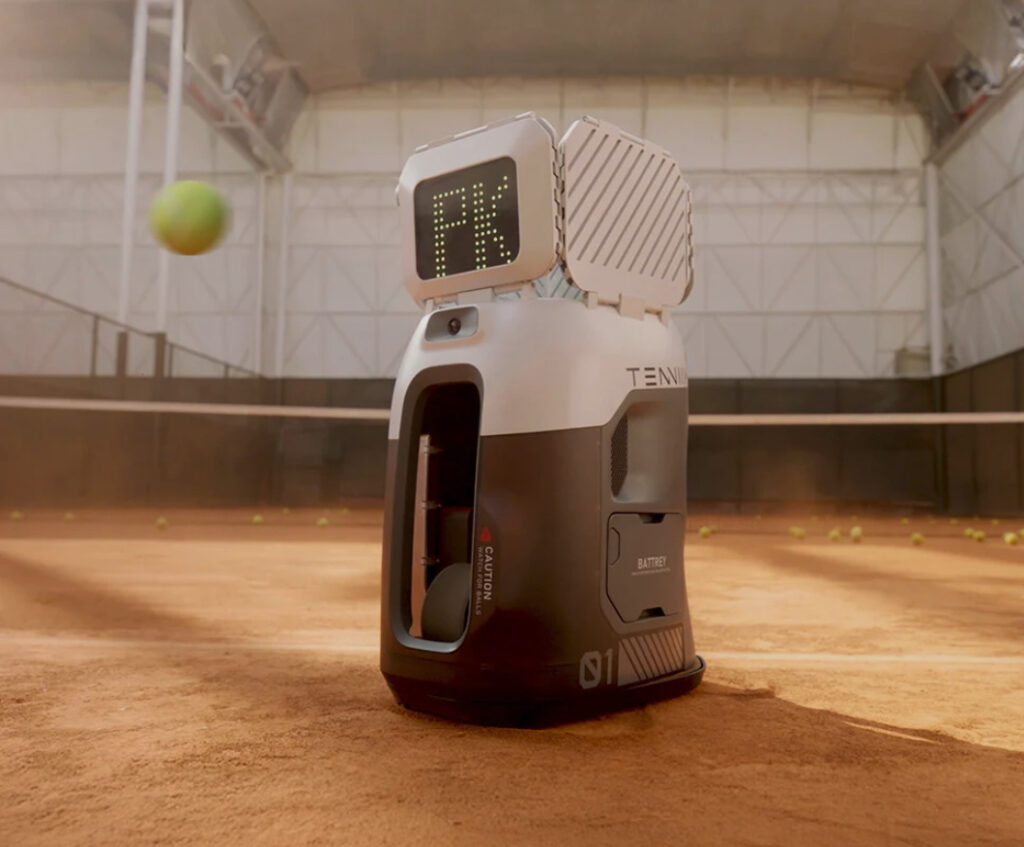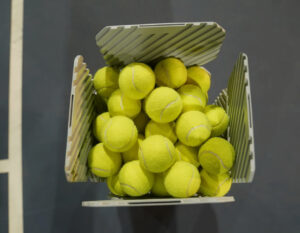In the canon of artificial intelligence, the dominant image has long been one of virtual confrontation: a game of chess where a grandmaster stares down an algorithm; a human mind tested against AlphaGo; a digitized opponent, cold and efficient, locked in simulated warfare against a carbon-based adversary. AI, in this legacy, is a disembodied brain — calculating probabilities, analyzing data, making moves on a virtual board. But with the rise of Tenniix, a new chapter begins — one that invites AI out of the abstract and onto the asphalt courts of real-life human athleticism.
Developed by T-Apex, the Tenniix isn’t just a tennis ball machine with a glossy tech upgrade. It’s something far more radical: an intelligent, mobile, gesture-sensitive robot that embodies the vision of AI not as a rival, but as a partner. Not a virtual adversary to outwit in cyberspace, but a physical companion that trains you, evolves with you, and mimics the nuances of human motion. In the pantheon of sports training devices, Tenniix may be remembered as a turning point — the moment AI learned to swing, serve, and sweat alongside us.
FROM STATIC TO SENTIENT: THE EVOLUTION OF THE BALL MACHINE
To fully appreciate Tenniix, it’s worth remembering what came before. Traditional tennis ball machines are, at best, rhythm machines — mechanical cannons that spit balls at set intervals and velocities. They simulate consistency, but not spontaneity. They offer endurance training, but no challenge of strategy. They are tools, not partners. You adapt to them; they do not adapt to you.
Enter Tenniix, which upends this model entirely. Instead of being fixed at the baseline, it is mobile, maneuvering across different zones of the court with an uncanny sense of purpose. It doesn’t just serve balls. It places them. It doesn’t just test your stamina. It interrogates your footwork, your timing, your angles. Thanks to its vision-based AI system, it “reads” you the way a coach might — watching for weaknesses, responding to your rhythm, and serving balls designed not for repetition but for progression.
In this, Tenniix does something truly novel. It makes training interactive. The player is no longer performing rote drills. They’re reacting, adjusting, responding in real time — not just to the machine’s mechanics, but to its choices. And that shift, from static routine to dynamic engagement, is the difference between practice and evolution.
VISION, MOBILITY, AND THE EMBODIMENT OF INTELLIGENCE
At the heart of Tenniix’s intelligence lies its vision-based AI — a camera-powered neural system trained to detect player movements, interpret stance and positioning, and predict shot selection. This allows it to calibrate each serve not as an isolated event, but as part of an ongoing conversation. It knows where you just stood. It anticipates where you’re going. It understands — on a purely visual and mechanical level — how to keep you on your toes.
The mobility of the robot only enhances this experience. Unlike legacy machines confined to one spot, Tenniix has agency. It moves across the court with a kind of spatial awareness that verges on eerie. When it serves from the backhand corner, it does so with purpose. When it shifts to the center baseline, it does so with intent. It simulates not just a machine, but an opponent. Or better yet — a sparring partner.
And then there’s the gesture control — a feature that sounds like science fiction until you use it. Raise your hand in a certain way, and the machine shifts its programming. Signal forehand. Signal backhand. Switch drills mid-session without pressing a button. The result is seamless. Fluid. Almost invisible. It creates a kind of choreography between human and robot that is intuitive, not instructional.
TRAINING BEYOND REPETITION: THE RISE OF INTELLIGENT FEEDBACK
In sport, progress often comes through subtle feedback. A coach notices your hips are rotating too late. A partner remarks on your hesitation before the net. Traditional machines are blind to these details. But Tenniix doesn’t just observe. It learns. Its AI system can, over time, begin to identify patterns in your play — too much reliance on the crosscourt forehand, a late pivot on backhand returns, sluggish footwork in transition.
This makes it not just a tool for conditioning, but a coach in mechanical form. Future iterations may integrate direct analytics — shot accuracy reports, improvement metrics, movement efficiency graphs — turning your tennis training into a quantified, optimized loop of feedback and refinement. For now, even in its current form, Tenniix already embodies a coaching intelligence that adapts to the user, not just the drill.
This is a seismic shift in how we approach personal athletic development. We move from rote execution to responsive evolution. From mechanical training to co-evolutionary learning — where the machine grows with the athlete.
SPORT AS A SYSTEM, NOT JUST A SKILL
Tenniix also opens up a broader philosophical conversation: how we conceive of sport itself. Is tennis merely a skill to be drilled, or a dynamic system of patterns, reactions, and flow? The AI-led approach of Tenniix leans into the latter. It doesn’t isolate strokes. It maps behaviors. It recognizes the court not as quadrants to be mechanically served into, but as a holistic field of motion, decision, and anticipation.
The best athletes don’t just hit well. They read well. They perceive. They react. They anticipate. Traditional machines train the hand. Tenniix trains the mind-body loop — the cognitive agility that underpins elite performance.
By integrating spatial recognition and adaptive variability, Tenniix trains players not just to hit balls, but to engage with the logic of play. It simulates complexity — and this complexity is what elevates practice into preparation.
WHO IS IT FOR?
At first glance, Tenniix might seem like a niche luxury — a sleek, high-tech alternative for elite players or academy coaches. But its implications run much deeper. For casual players, it offers individualized, on-demand practice without needing a partner. For juniors, it becomes a patient tutor. For professionals, it becomes a metrics-driven sparring coach. For players recovering from injury, it allows gradual, controllable reentry into training.
Its portability and user-friendly interface make it less intimidating than it sounds. This is AI not as alien, but as accessible. The design is compact, maneuverable, and aesthetically neutral — more sports gear than sci-fi monolith. T-Apex seems intent on democratizing high-performance training, not enclosing it behind paywalls or gated clubs.
In many ways, Tenniix could become the Peloton of tennis — not in the sense of community building (yet), but in reimagining what solo, at-home athletic training looks like. It offers not escape from the real court, but deeper immersion in it.
THE FUTURE: BEYOND TENNIS
Though Tenniix is currently built for tennis, it is impossible not to imagine its evolution across sports. Vision-based AI, combined with gesture recognition and mobile actuation, is a template that could migrate to pickleball, squash, baseball, even soccer goalkeeping drills. What Tenniix represents is not just a product but a platform — a new model for embodied, intelligent sports robotics.
As AI continues to escape the confines of the screen and inhabit physical form, we are entering an age where training machines will no longer be neutral. They will be strategic. They will be spatially aware. They will learn us as we learn them.
Impression
For decades, artificial intelligence has tested the limits of cognitive competition. Now, with Tenniix, it tests the limits of kinesthetic partnership. It trains not against you, but for you. It observes, adjusts, learns, and responds. It doesn’t replace the human coach or rival the athlete — it refines both.
In a sport built on timing, rhythm, and responsiveness, Tenniix is a revelation — not because it mimics human movement, but because it supports human progression. It’s a machine, yes, but it behaves like something more: a sentient sparring partner, an adaptive coach, a quiet strategist.
This is no longer the age of static machines. This is the age of kinetic intelligence. And the serve — quite fittingly — is just the beginning.
No comments yet.








